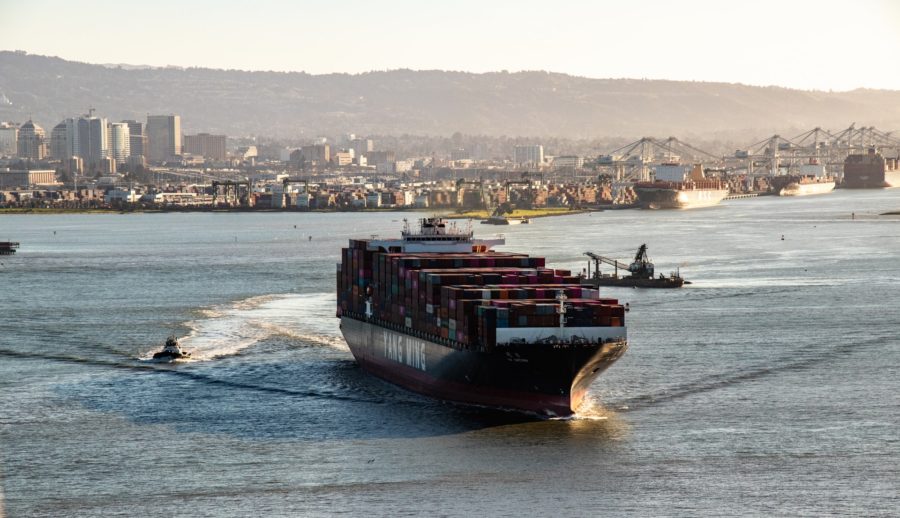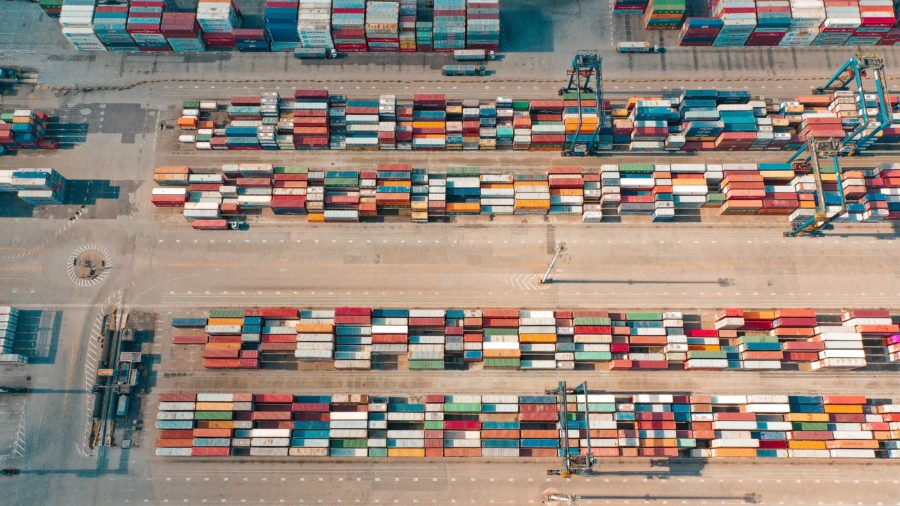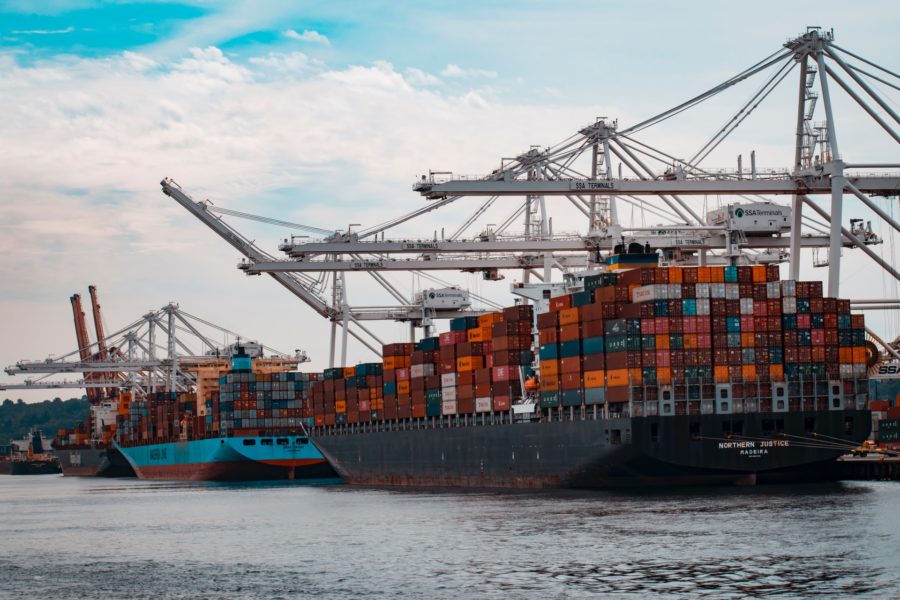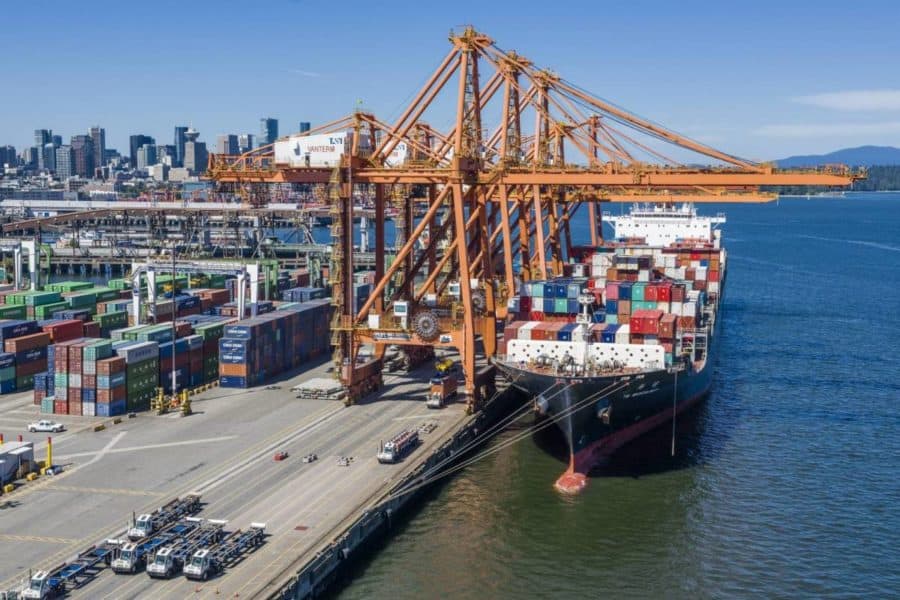News
Sign up for recent trade news that can affect your business:

In light of COVID-19, CBSA has issued Custom Notice CN20-12 providing guidelines to the commercial importing industry on tariff classifications for medical supplies.
Click here to read Customs Notice 20-12.
Provided by the World Customs Organization, the list of medical supplies for COVID-19 based on tariff classification includes diagnostic test kits, face and eye protection, gloves, protective garments and the like, disinfectants/sterilization products, medical devices, thermometers, wipes, medical consumables, soap, toilet paper, and other toiletries.
Medical supplies required for COVID-19 may qualify for duty and tax relief upon importation. For further information, please review Customs Notice 20-08.
CBSA requests that importers also add the term “URGENT – COVID-19” as the goods description in release information submitted to the CBSA for all medical devices being imported to Canada for COVID-19.
For guidance around tariff classification for medical supplies, please do not hesitate to reach out to Carson.
Get in touch:
Tyler Carson, President, tyler@carson.ca
Dave Pentland, VP, dwpentland@carson.ca
Matt Earish, COO, matt@carson.ca

The Trump administration has decided not to postpone tariff payments as part of its response to the pandemic, National Economic Council Director Larry Kudlow said on Friday. Appearing on Bloomberg TV , Kudlow said the administration had decided that temporarily suspending most-favoured-nation tariff payments would be “too complicated” and would send “the wrong signal in terms of the president’s trade policy,” Bloomberg reported.

As we collectively continue to navigate our present reality under the impacts of COVID-19, Carson continues to be committed to supporting our clients through consistent business operations, and a client-centric approach. COVID-19 has challenged our organization to be agile and responsive as we navigate this new landscape. Like many of you, our team is working remotely to do our part to help #flattenthecurve.
Both Canadian and US Governments are responding to the pandemic with supports in an effort to lessen the impact to businesses. It is important to understand what relief is available for your business, and how you can take advantage of government programs to help safeguard you throughout this process.
Click here to learn more about Canada’s COVID-19 Economic Response Plan.
Click here to learn more about the United States’ COVID-19 Response to COVID-19.
We recognize this as uncharted territory for both large and small businesses, and are committed to helping our clients in any way we can, while remaining a cornerstone in your supply chain.
With new information coming out daily regarding government responses to COVID-19 and its impacts, we want to ensure you that we are here to help you navigate this climate. Please do not hesitate to reach out at any time with questions you may have about government responses, and to learn how Carson is mobilizing to support clients.
Get in touch:
Tyler Carson, President, tyler@carson.ca
Dave Pentland, VP, dwpentland@carson.ca
Matt Earish, COO, matt@carson.ca

After almost three years of discussion between Canada, Mexico, and the United States, a deal was struck in the ongoing CUSMA negotiations. The new agreement was ratified by all three governments, however, all three governments must give their notice of readiness to comply with the new measures. Both Canada and Mexico have given their notice, while the United States has yet to send a similar notice to the other two partners. With the current COVID-19 pandemic impacting countries across the globe, the United States has now placed CUSMA at a lower priority.
If the United States provides their notice by the end of April, the earliest the new agreement could take effect is July 1, 2020.
In anticipation of CUSMA coming into effect, here is how CUSMA will impact your import and export activity:
To review the full agreement, click here. We will share all future information about the new CUSMA agreement as they become available. Carson is committed to supporting our clients throughout this process to ensure compliance, and are happy to answer any questions you may have. Please do not hesitate to reach out to the team at Carson at any time.
Get in touch:
Tyler Carson, President, tyler@carson.ca
Dave Pentland, VP, dwpentland@carson.ca
Matt Earish, COO, matt@carson.ca

The heads of the World Customs Organization (WCO) and the World Trade Organization (WTO) issued a joint statement on 6 April pledging to work together to facilitate trade in essential goods such as medical supplies, food, and energy.
WCO Secretary General Dr. Kunio Mikuriya and WTO Director-General Roberto Azevêdo said the two organizations would work closely together to minimize disruption to cross-border trade in goods – in particular those essential to combat the COVID-19 pandemic – while safeguarding public health.
They also pledged to establish a coordinated approach to support initiatives that facilitate cross-border trade so that essential goods can quickly reach those most in need, including in least developed and land-locked countries. WCO and WTO members have already been invited to increase transparency by sharing information on new trade and trade-related measures introduced in response to the COVID-19 pandemic.
“As COVID-19 continues to spread globally and governments consider new measures to protect the health and well-being of their citizens, we urge Members to ensure that any new border action is targeted, proportionate, transparent and non-discriminatory,” they declared.

Exceptions will be in place for U.S. citizens, diplomats, crew and immediate family members of citizens
Canada is barring entry to all travellers who are not Canadian citizens, permanent residents or Americans, Prime Minister Justin Trudeau announced today — one of a set of extraordinary new measures being introduced to stop the spread of COVID-19.
There will be exceptions for air crew, diplomats, immediate family members of citizens and, “at this time,” U.S. citizens, Trudeau said.
The prime minister also said no one who is displaying symptoms will be permitted to board a flight to Canada, and that air operators will be required to complete a basic health assessment of every passenger based on guidelines from the Public Health Agency of Canada.
“I know this news will spark concern among Canadians travelling abroad. I want to assure you that our government will not leave you unsupported,” he said.
“To help asymptomatic Canadians to return home, our government will set up a support program for Canadians who need to get on a plane. Canadian travellers will be able to get financial assistance to help them with the costs of returning home or temporarily covering basic needs while they wait to come back to Canada.”
Trudeau also said that as of March 18, international flights will be permitted to land only at the international airports in Montreal, Toronto, Calgary and Vancouver, in order to enhance screening.
“I know that these measures are far-reaching. They are exceptional circumstances calling for exceptional measures,” he said.
Trudeau said the new border controls will not apply to trade and commerce in order to keep Canada’s supply chains open.
An official in the PMO said the measures will be in place “as long as necessary” because the situation is “evolving.”
Deputy Prime Minister Chrystia Freeland said the decision to keep the border open to Americans was made to reflect the integration of the two economies and populations, and to maintain essential supply lines for things like food.
“That border is absolutely vital to the daily lives of the people who live on both sides of that border,” she said.
Everyone arriving in Canada from another country is now going to be asked to self-isolate for 14 days. Essential workers, including air crews and truck drivers, will be exempted from that rule, Freeland said.
Canada’s Chief Medical Health Officer Dr. Theresa Tam said Monday that new measures are necessary to slow the spread of the virus. She’s now recommending that gatherings of 50 or more people should be avoided.
“All Canadians must act now to interrupt chains of transmission,” she said.
Providing updated COVID-19 numbers, Tam said there are now more than 175,000 cases around the world, including 407 in Canada.
There have been four deaths in Canada.
The full story can be found at the CBC website: https://www.ctvnews.ca/health/coronavirus/canada-shutting-the-border-to-most-non-citizens-due-to-covid-19-pm-trudeau-1.4854503
Carson has carefully monitored the impact of the global pandemic known as Covid-19. With this we understand the importance of our clients and our employees we work with each and every day.
We have taken proactive steps within our business to ensure that our employees remain safe and that our clients will see no change in service from us as your trading partner. In the coming weeks we will continue to ensure the necessary adjustments are made to support our employees and clients.
Carson will remain a 24/7 operation throughout the COVID-19 situation and will continue to keep you updated as it relates to your global shipments. We will be here to assist you and provide support during these challenging times.
For any questions or concerns please contact me directly,
Tyler Carson
President
Carson International
This evening, the United States and Mexico reached a deal that will avert the use of import tariffs of Mexican goods scheduled to go into effect this Monday, June 10. According to a tweet from the President, Mexico has agreed to “take strong measures to stem the tide of migration through Mexico, and to our Southern Border” which will “greatly reduce, or eliminate, Illegal Immigration coming from Mexico and into the United States.”
The U.S. State Department will be release details of the arrangement soon.
In an effort to put pressure on Mexico to address immigration issues, President Trump announced that a 5% tariff will be imposed on goods from Mexico effective June 10. The President stated that if Mexico’s response is not deemed sufficient, tariffs will be increased according to the following schedule:
Rates will remain at 25% thereafter until Mexico “substantially stops the illegal inflow of aliens coming in through its territory.”
The president asserts this action under the International Emergency Economic Powers Act of 1977, which has previously been utilized to freeze or block assets of foreign governments or nationals.
Similar to previous tariff actions initiated by the administration, we anticipate this action to mean additional tariffs on top of existing rates of duty, including on NAFTA qualifying goods. We expect a federal register notice prior to initiation of these tariffs, with additional details clarifying the scope of the action. Reported by Sandler Travis and Rosenberg, PA. May 31
The B.C. Maritime Employers Association says it plans to lock out International Longshore and Warehouse Union employees Thursday at 8 a.m.

By Nick Eagland
The B.C. Maritime Employers Association, which negotiates for the 55 companies that operate port facilities, gave notice Tuesday to the International Longshore and Warehouse Union of Canada, saying that because of a limited longshore strike that began Monday, it would lock out most of the 6,000 longshore workers at 8 a.m. on Thursday.
The lockout won’t affect cruise ship operations or, under federal law, loading and handling of ships at the port’s grain terminals.
Rob Ashton, president of the International Longshore and Warehouse Union of Canada, said the notice came as a shock. “The only thing I can think of is that they want to drag the Canadian government into this, and hope for legislation,” he said.
“The union has been trying to get a freely negotiated collective agreement — which is our right — for the last 18 months. I’m hoping the BCMEA was trying to do the same thing. Up until today, that’s what I thought they were doing.”
Ashton described the move as “reckless” and warned a lockout would undermine the economies of B.C. and Canada.
“The union knows the ramifications of shutting down the ports in B.C.” he said. “That’s why we did the limited action — keep the ports open, keep the cargo flowing, everything looking good. Then today — bam.”
The major sticking point in contract talks has been the employers’ desire to increase automation at the port, which Ashton says will eliminate good jobs supporting middle-class families.
On Tuesday night, the B.C. Maritime Employers Association said after discussions with the Federal Mediation and Conciliation Service and Ministry of Labour, the two parties agreed to return to the bargaining table Wednesday at noon.
The lockout notice, however, has not been lifted, the association said.
Ashton said he hopes the association “comes to their senses” and revokes the lockout notice. The union’s bargaining committee will return to the table Wednesday at noon, he said.
The employers association said it didn’t arrive at the lockout decision lightly, given the potentially major impact a shutdown will have on the Canadian economy.
“Our focus continues to be returning to the table to reach a fair and equitable agreement,” said Jeff Scott, chair of the B.C. Maritime Employers Association. “We do not want to lock out the employees, so it would really be a last resort.”
The union began a partial strike on Monday targeting just Global Container Terminals Canada, which operates the Deltaport and Vanterm container terminals.
The union characterized it as a “limited and targeted job action” involving an overtime ban, but Scott said the reality on the ground was “almost full-scale” job action against those terminals, which together handle a big majority of the millions of containers that pass through Vancouver every year.
“Immediately there were work stoppages, there were productivity delays, there were other disruptions, so it was significantly different to what we were led to believe was going to happen on Monday and Tuesday,” Scott said.
Ashton said that the strike action was limited to no early starts, and no working past the end of shifts or during meal periods. A single workplace dispute involving a manager and tradespeople was resolved at the site, he said.
“All I know is my guys are doing what they normally do, stopping at stop signs and running at speed limits,” Ashton said.
Scott said four cargo vessels have already diverted from the B.C. coast, and that others may be considering switching to U.S. ports.
“We’re very concerned that we cannot continue to operate the facilities in an efficient and safe manner,” Scott said. “We were left no other recourse other than to issue a lockout notice.”
Scott said the association has requested intervention by the federal government, which regulates ports, and would like to get back to bargaining with the union and specialists from the Federal Mediation and Conciliation Service. Ottawa, for its part, said it hoped for a negotiated settlement.
“We would like to see the parties back at the table negotiating an agreement, rather than having a standoff that negatively impacts the Canadian economy,” said Robert Louis-Manning, president of the Chamber of Shipping of B.C., which represents the ocean carriers that use the terminals and ports in the province.
Louis-Manning said that even the threat of a lockout had an impact on the industry, with vessels either departing early or avoiding Vancouver altogether on Tuesday.
“Nobody wants stranded cargo, so contingencies will likely unfold fairly quickly in the next 24 hours,” he said. “Where possible, I think carriers will likely to divert.”
Louis-Manning said it’s too early to know what the economic impact will be, but said it could be substantial.
“The real challenge will be how the railways react to even the threat of labour disruption,” he said. “That’s when the supply chain starts to really have an economic impact on Canada.”
In 2011, it was estimated a port shutdown could cost the Canadian economy $100 million a day. Since then the port has only grown in size and importance. The impact in Vancouver would be enormous because a strike would likely also idle thousands of truck drivers and employees of companies that serve ships in the port.
Vancouver is the third largest port in North America by tonnes of cargo.
There have been 12 labour disruptions at the Port of Vancouver since 1969. There was a nine-day lockout in 1999, a one-day strike in 1998 and another strike in 1995. This resulted in 175 days lost, not counting 2005, when truckers withdrew their services for six weeks.
In 2018, shipments through the Port of Vancouver’s four container terminals reached a record 3.4 million 20-foot-equivalent containers. The Port of Vancouver expects to reach container capacity soon and is working to expand terminals.